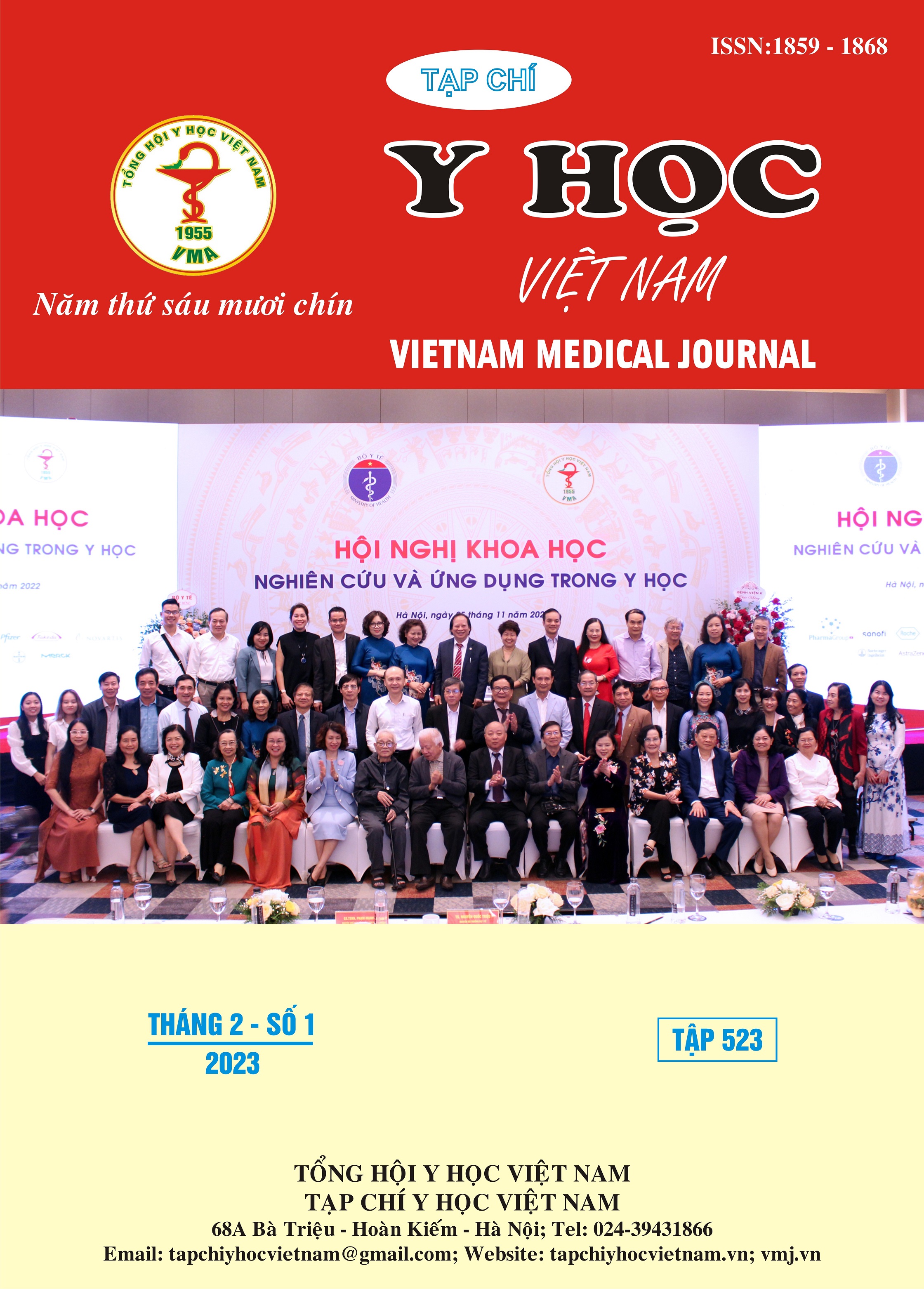OUTCOME OF SUPRAGLOTTIC LARYNGECTOMY ON MANAGEMENT OF SUPRAGLOTTIC LARYNGEAL CANCER
Main Article Content
Abstract
Objectives: Application of supraglottic laryngectomy and evaluation of the primary results. Methods & Materials: Cross-sectional study of 25 patients with supraglottic laryngeal cancer who had done supraglottic laryngectomy. Results: Mean age 60 ± 8 years, the most common age group is 50-70 years old. There are 22 males and 3 females, most had a history of tobacco and alcohol use for many years. The most common clinical symptom is swallowing disorders (92%): dysphagia 76%, odynophagia 48%. The most common tumor is in the T2 stage, accounting for 88% and the T1 stage for 12%. Epiglottis is the most common site for cancer lesions in 96%, 100% of patients with squamous carcinoma. Pneumomia is the most commom complication 28%, hemmorrhage 20%, wound infection 16%. Severe aspiration is the most commom sequelae 56%, no decannulation 16%, laryngeal stenosis 12%. OS 71%, three years OS 87,5%, five years OS 57,1%. Conclusion: Supraglottic laryngectomy permitted the restoration of laryngeal functions. The principal indication was for the tummor in T2. It is worth having an important place among the management of supraglottic laryngeal cancer.
Article Details
Keywords
supraglottic laryngeal cancer, supraglottic laryngectomy
References
2. Herranz J, Martínez-Vidal J, Gavilán J. Horizontal supraglottic laryngectomy: Modifications to alonso’s technique. Operative Techniques in Otolaryngology-Head and Neck Surgery. 1993;4(4):252-257. doi:10.1016/S1043-1810(10)80151-4
3. Lê Xuân Nhân, Đặng Thanh, Trần Phương Nam. Nghiên cứu đặc điểm lâm sàng và kết quả điều trị ung thư thanh quản tại Huế. Tạp chí Y Dược học- Trường Đại học Y Dược Huế 2019;9(6+7):114-120.
4. Quản Thành Nam (2013). Đánh giá kết quả phẫu thuật cắt thanh quản bán phần trên nhẫn kiểu Tucker trong điều trị ung thư thanh quản giai đoạn T2 tại Bệnh viện Tai Mũi Họng trung ương, Luận văn thạc sỹ y học, Đại học Y Hà Nội.
5. Phạm Minh Tuấn (2015). Đánh giá kết quả phẫu thuật cắt một phần thanh quản trên nhẫn và tạo hình nhẫn - móng- thanh nhiệt, Luận văn Thạc sỹ Y học, Đại học Y Hà Nội.
6. Hannu Raitiola (2000) “Epidemiology, clinical characteristics and traetment outcome of laryngeal cancer”. Tampere University dissertation.
7. Gallo O, Locatello LG, Larotonda G, Napoleone V, Cannavicci A. Nomograms for prediction of postoperative complications in open partial laryngeal surgery. J Surg Oncol. 2018;118(6):1050-1057. doi:10.1002/jso.25232.
8. Phan Thanh Hưng (2021) Đánh giá kết quả xử trí các biến chứng và di chứng của phẫu thuật cắt thanh quản bảo tồn trong ung thư thanh quản, Luận văn Thạc sỹ Y học, Đại học Y Hà Nội
9. Tống Xuân Thắng (2008). Nghiên cứu ứng dụng cắt một phần thanh quản trên nhẫn có tạo hình kiểu nhẫn - móng - thanh thiệt, Luận văn tiến sỹ y học, Đại học Y Hà Nội.
10. Đoàn Thị Hồng Nhật (2018). Nhận xét kết quả phẫu thuật cắt thanh quản bán phần trên nhẫn tạo hình kiểu Tucker, Luận văn thạc sỹ y học, Đại học Y Hà Nội.


